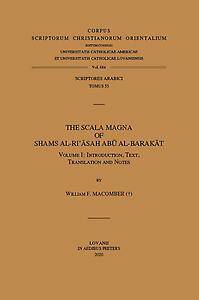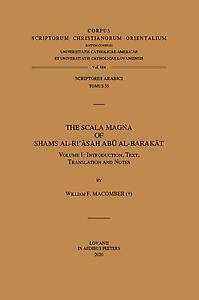
- Afhalen na 1 uur in een winkel met voorraad
- Gratis thuislevering in België vanaf € 30
- Ruim aanbod met 7 miljoen producten
- Afhalen na 1 uur in een winkel met voorraad
- Gratis thuislevering in België vanaf € 30
- Ruim aanbod met 7 miljoen producten
Zoeken
The Scala Magna of Shams Al-Ri'asah Abu Al-Barakat. Volume I
Introduction, Text, Translation and Notes
Wf Macomber
€ 102,00
+ 204 punten
Omschrijving
Among the different kinds of "ladders", there was the classified vocabulary, of which several anonymous examples have survived in the manuscripts. These "ladders" group together Bohairic words relating to, for example, geographical features, meteorological phenomena, birds, beasts, creeping things, palm trees, fruits, vegetables and so on. Within each section the words were listed without special order. These "ladders", too, follow examples set by Arabic lexicographers. The "ladder" edited here is an example of this category. It alone is ascribed in the manuscripts to a named author, Shams al-Ri'asah Abu al-Barakat Ibn Kabar (died 10 May, 1324 A.D.). He is presumably identical with the priest of the church called al-Mu'allaqah in Old Cairo, al-Shams Ibn Kabar, who also bore the name Barsauma, who is mentioned in the colophon of Berlin Arabic 10173. He served as secretary to the Mamluk official Baybars al-Mansuri. Besides this "ladder", he composed an ecclesiastical encyclopedia, "The Lamp (that Illuminates) the Darkness and the Elucidation of the Liturgy", and a collection of sermons for feasts and special occasions. His "ladder" is commonly called the Great Ladder, presumably because it is the most complete example of the classified vocabulary. In addition, it attempts to organize the different classifications in a more logical order than is usual for the anonymous classified vocabularies. It is divided into ten books.
Specificaties
Betrokkenen
- Auteur(s):
- Uitgeverij:
Inhoud
- Aantal bladzijden:
- 277
- Taal:
- Engels
- Reeks:
- Reeksnummer:
- nr. 684
Eigenschappen
- Productcode (EAN):
- 9789042918993
- Verschijningsdatum:
- 31/03/2020
- Uitvoering:
- Paperback
- Formaat:
- Trade paperback (VS)
- Gewicht:
- 198 g

Alleen bij Standaard Boekhandel
+ 204 punten op je klantenkaart van Standaard Boekhandel
Beoordelingen
We publiceren alleen reviews die voldoen aan de voorwaarden voor reviews. Bekijk onze voorwaarden voor reviews.











